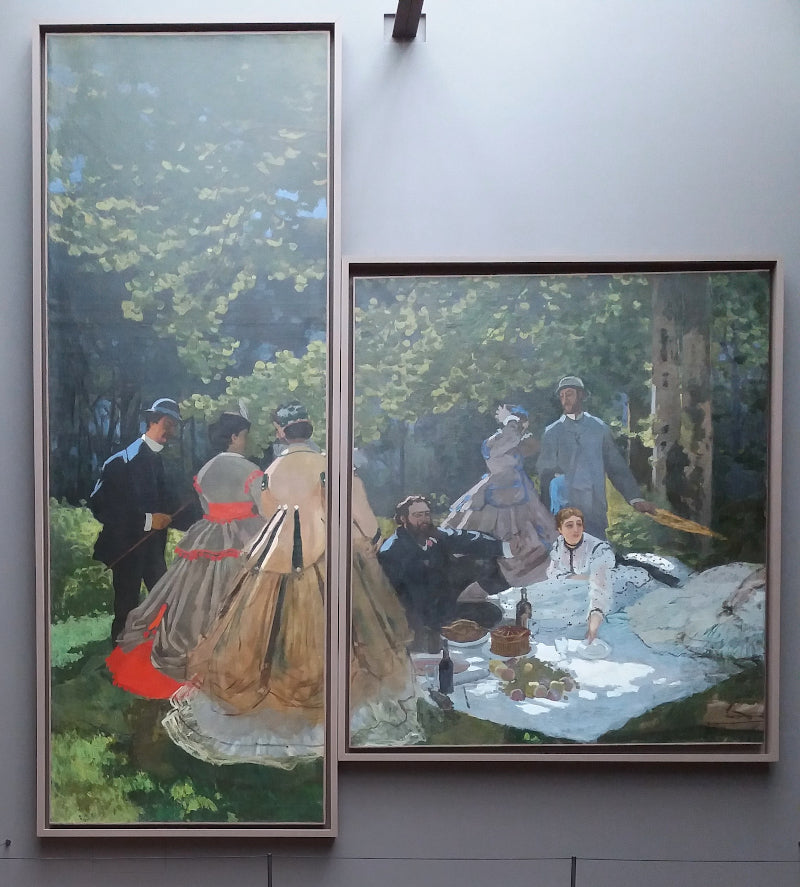150 years ago this week, a group of 31 artists put on an exhibition in Paris.
Nobody came.
These artists, including Monet, Renoir and Cezanne, had each been rejected by the world’s most prestigious art exhibition: the Paris Salon.
It was little surprise. The Salon demanded traditional artworks. They had to have:
1) Perfect perspective
2) Invisible brushwork
3) And depict scenes from classical literature
Like this:
 A typical artwork from a 19th century Paris Salon exhibition. This by Alexandre Phebre.
A typical artwork from a 19th century Paris Salon exhibition. This by Alexandre Phebre.
What Monet and co offered were criticised as "unfinished daubs" in comparison. Of “low” subject matter such as landscapes and everyday life. Free from traditional structures.
Above all, these new works conveyed the sight, sound and touch of a single moment.
It was shocking. It was impressionism. It was the birth of modern art.
 Monet's 'Impression, Sunrise' - the shocking 1872 artwork that gave Impressionism its name
Monet's 'Impression, Sunrise' - the shocking 1872 artwork that gave Impressionism its nameThat's why I'm so excited to offer you this.
Handwritten letters by the impressionist painters are among the hottest areas in both autograph and art collecting.
With original artworks soaring in price, priced-out collectors have turned to more affordable yet still important areas.
Today I offer you a wonderful thing:
A letter handwritten by Claude Monet - the leader of the impressionist movement. The founder of modern art.
 Monet handwrote and signed this letter in 1884 - today you can own it
Monet handwrote and signed this letter in 1884 - today you can own it...This letter has a feature that makes it extraordinary.
Because not only does Monet discuss an important work in this letter (rare in itself)...
...This letter actually saved the artwork from destruction.
It’s an early masterpiece you can see hanging in Paris' Musée d'Orsay today:
Le Déjeuner sur l'herbe

Monet began Le Déjeuner sur l'herbe (Luncheon on the Grass) in 1865, when he was 25.
Widely regarded as "the most important painting of Monet's early period", he hoped the vast 6 x 4 metre painting would launch his name in Paris.
Yet Monet was never able to finish it. The financially struggling painter had to use the unfinished artwork to pay his rent.
In 1866, Monet gave it to his landlord Alexandre Flament as collateral. Monet promised to one day return, pay his rent in cash and take back the painting.
Flament stored the rolled-up canvas in his cellar.
18 years later
In 1884, and finally making a living from his art, Monet decided to take the painting back.
So on January 10, Monet wrote the letter you can own today.
 An exceptional Monet signature - such life, such artistry
An exceptional Monet signature - such life, such artistryMonet writes (in French):
"Mr Flament, I have meant to write to you for a long time about my belongings that are still with you and especially about my large painting that is probably very troublesome for you because of its size.
"Can you please be so kind as to give me news about the painting because I am now better paid here and I believe it would be possible for me to relieve you from keeping it."
Rescued from the cellar
The letter worked. Monet paid his debt and retrieved the painting. But the 18 years in the cellar meant the painting was in poor condition.
"When I finally had enough money to get it back, it had gone mouldy," Monet later recalled.
Monet was forced to cut up the canvas, to save part of it.
Today just two fragments of the original painting survive.
Yet without this letter, there would be nothing left at all.

Monet's handwriting is crisp and wonderfully legible. His signature fluid and expressive - as you would expect.
Unfaded by time. This letter brings one of the great artists into your home.
Immaculate condition
Monet writes across two sides of a single sheet, measuring 4.5 x 7.25 inches.
The edges and corners are sharp. No tears or paper loss. Beautifully preserved for 140 years.
Ready for display
Pair the letter with a print of the artwork it saved, and you have a piece with stunning wall power.
As I said, great artists' letters discussing key pieces rarely come up for sale.
Letters that actually saved an artwork? Unheard of.
What a story you'll be able to tell visitors to your home.
The price is only £9,995 ($12,500).
It comes with my Lifetime Moneyback Guarantee of Authenticity. 28-day returns if you change your mind. And delivery to any address in the world - fully insured.
Buy this Monet letter now
Or call +44 (0)1534 639 998
Or email info@paulfrasercollectibles.com
What an opportunity to own a piece of the artist who started the modern revolution.
This letter should really be in the Musée d'Orsay alongside the painting. And it may be there soon. Because later this week I will offer it to them. Unless you buy it first.
Act now.
Until next time,
Paul Fraser
P.S. Remember - any letter handwritten by the founder of impressionism is a wonderful object. This is exceptional. Own it now.
Are you following us on social media? Find us here:
Facebook | Twitter | Instagram | Pinterest | Youtube






